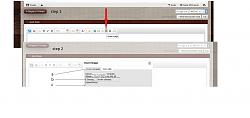Hi Marv.
My spindle travel is 5" and to set the stop at one inch you have to turn a small
knob down 4", and that is a very slow process. When your done you turn
the knob back up to get full travel again. It's not impossible, it's just time consuming.
A speed nut would have been great.
Thanks Marv for you help
Jim D.


 LinkBack URL
LinkBack URL About LinkBacks
About LinkBacks


 Reply With Quote
Reply With Quote







Bookmarks